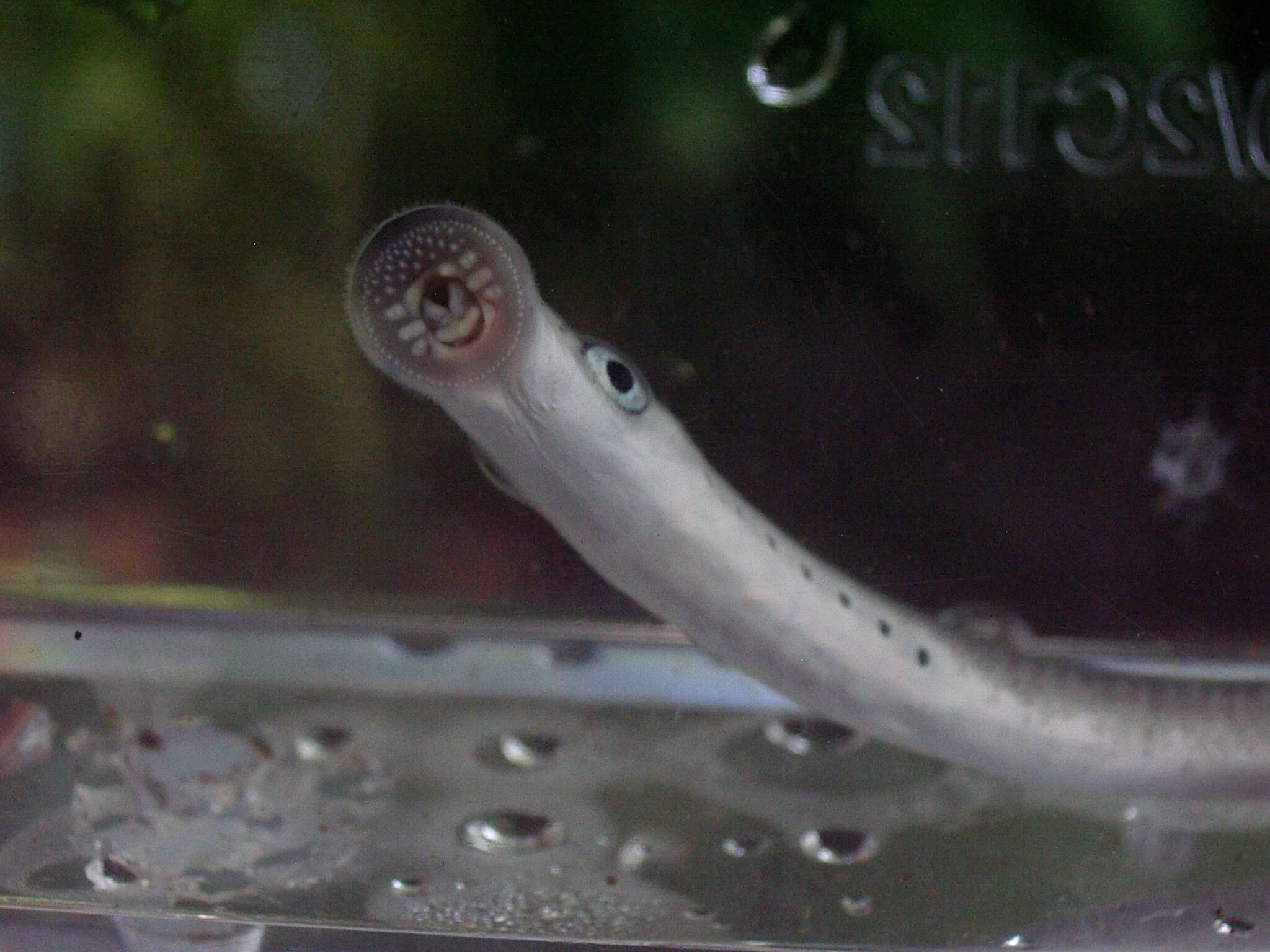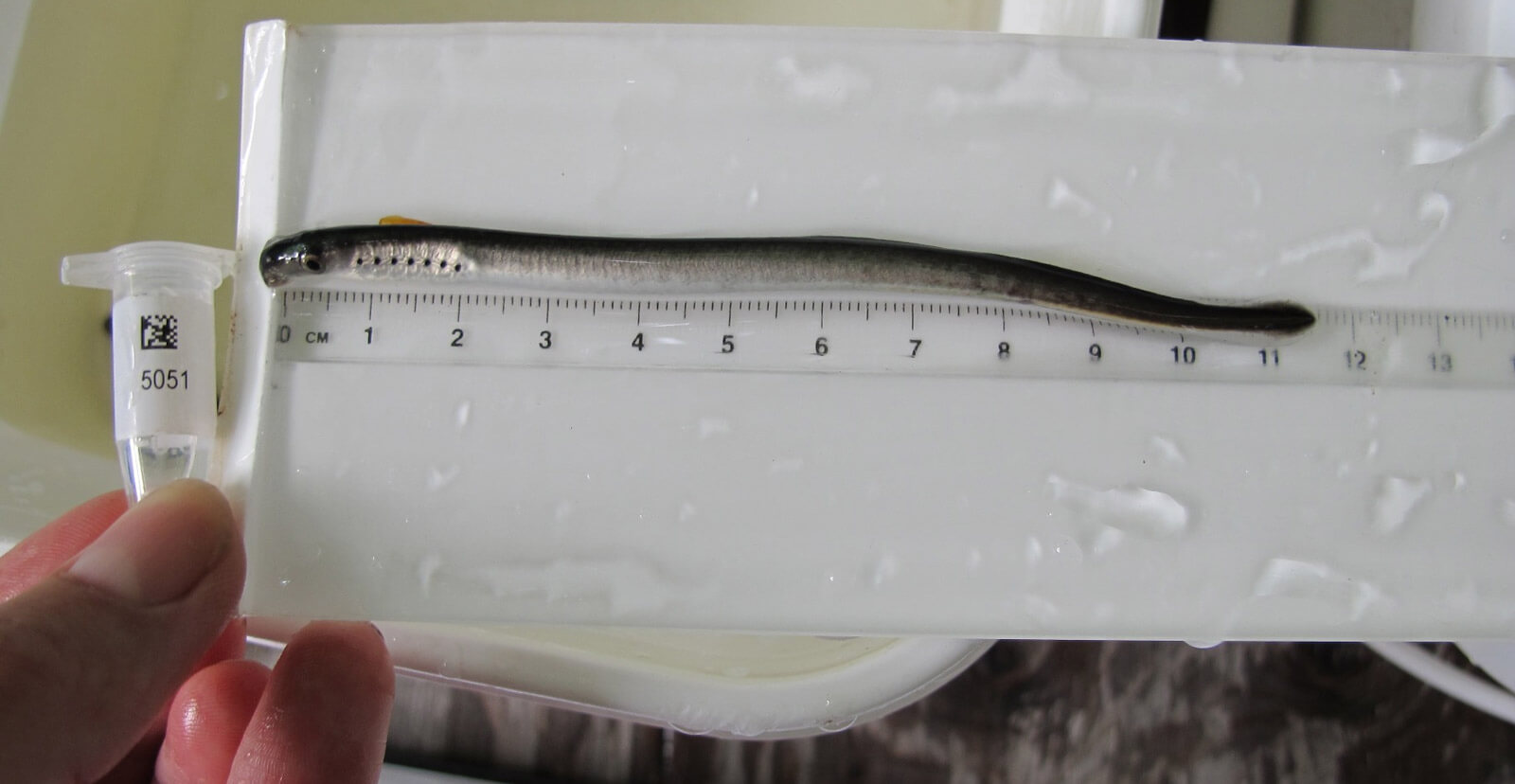The following is modified from a document written August 6, 1999 by Lesley Ann Chapman.
Introduction:
Note: There are three reported lamprey species found in the Morrison Creek Watershed; Pacific lamprey (Lampetra tridentata), the Western brook lamprey (L.richardsoni) and the Morrison Creek Lamprey (L.richardsoni variety marifuga).
The Morrison Creek Lamprey (Lampetra richardsoni var. marifuga ) is a rare form of the widely distributed Western Brook Lamprey. This particular species lives exclusively in Morrison Creek – a tributary to the Puntledge River in Courtenay BC on Vancouver Island – it is found nowhere else in the world! Due to its extremely limited distribution and potential impacts resulting from ongoing development in the Morrison Creek Watershed, the Committee on the Status of Endangered Wildlife in Canada (COSEWIC) has upgraded the conservation status for the MC Lamprey to “endangered”. Species listed under this designation are defined as a species facing imminent extirpation or extinction. As far as we know, the Morrison Creek Lamprey have co-existed with salmon in the Morrison Creek Watershed since the end of the last ice age.
Life-Cycle:
Lampreys are a very successful group of aquatic vertebrates that are found in most temperate rivers and coastal seas. They have been in existence for over 300 million years. They spawn only once, depositing their eggs in gravel in the streambed. After the eggs hatch, the young quickly burrow into soft sediments on the channel bottom where they spend about 5 to 7 years living as filter feeding larvae called ammocetes before metamorphosing into free-swimming juveniles.
All lamprey species have one of three different adult life history types: 1) anadromous and parasitic; 2) non-anadromous and parasitic; and 3) non-anadromous and non-parasitic. However, the most unique and interesting characteristic of the MC Lamprey is that it produces two different life history types from a single population. That is, as the MC Lampreys mature to spawn, some of the metamorphosing juvenile lampreys become non-parasitic forms (no pronounced teeth), while others become parasitic (have teeth). Both forms of the MC Lamprey are non-anadromous.
What do they look like?
The Morrison Creek Lamprey ranges in size between 10-15cm (4-6inches). The parasitic form can be distinguished from the non-parasitic form by its silver colour, white belly and prominent teeth. More pictures and video can be found under Lamprey Visuals.
Image credit: healthywildlife.ca.
Importance to the scientific community:
Because of the fact that the MC Lamprey produces two life history types, it presents a tremendous opportunity to improve our understanding of lamprey taxonomy and evolution. Its preservation is therefore extremely important to the scientific community to ensure that future biologists can study this unusual and poorly understood species complex. As far as we know, they and the salmon have lived together successfully in this watershed since the end of the last ice age.
Report Lamprey Sightings in the Watershed:
Anyone that encounters the parasitic form of the MC Lamprey (silver with teeth) (if they are seeing teeth, they are already too close!) please report the date and location of the sighting to either the Morrison Creek Streamkeepers via e-mail to morrisoncreek@yahoo.ca or by phone at (250) 338-1867. It is also asked that any lampreys found in Morrison Creek, including the parasitic form, be left alone and unharmed.
For more academic information about the Morrison Creek Lamprey (L. richardsonii var. marifuga ), read the document written by Heather McDermott available at the top of this page or see the following:
| Paper Title | Journal/Publisher | Author | Link |
|---|---|---|---|
| Status of the Morrison Creek Brook Lamprey Lampetra richardsoni var. marifuga in Canada. | Department of Fisheries and Oceans. Nanaimo, BC. | Beamish R.J., and J. H. Youson, L. A. Chapman, 1998 | Link |
| Freshwater Parasitic Lamprey on Vancouver Island and a Theory of the Evolution of the Freshwater Parasitic and Non-parasitic Life in History Types. | Beamish, R. J., 1985. | In Foreman, Gorbman, J.M. Dodd and R. Olsson editors, Evolutionary Biology of Primitive Fishes, Plenum Publishing co. 123-140. | Link |
| Phylongeny of the Lamprey Genus Lampetra Inferred from Mitochondrial Cytochrome b and ND3 Gene Sequences. | Docker, Margaret F. et al, 1999. | Canadian Journal of Fisheries and Aquatic Science, 56: 2340-2349. | Link |
| A Comparison of Endocrine Pancreatic Tissue in Adults of Four Species of Lampreys in British Columbia: A Morphological and Immunohistochemical Study. | Youson, J. H. et al, 1988. | General and Comparative Endochrinology, 70: 247-261. | Link |
| Comparison of the Internal Morphology of Adults of a Population of Lampreys that Contains a Non-Parasitic Life-History Type, Lampetra richardsoni, and a Potentially Parasitic Form, L. richardsoni var. marifuga. | Youson, John H. and Richard J. Beamish, 1991. | Canadian Journal of Zoology, 69 (3): 628-637. | Link |





